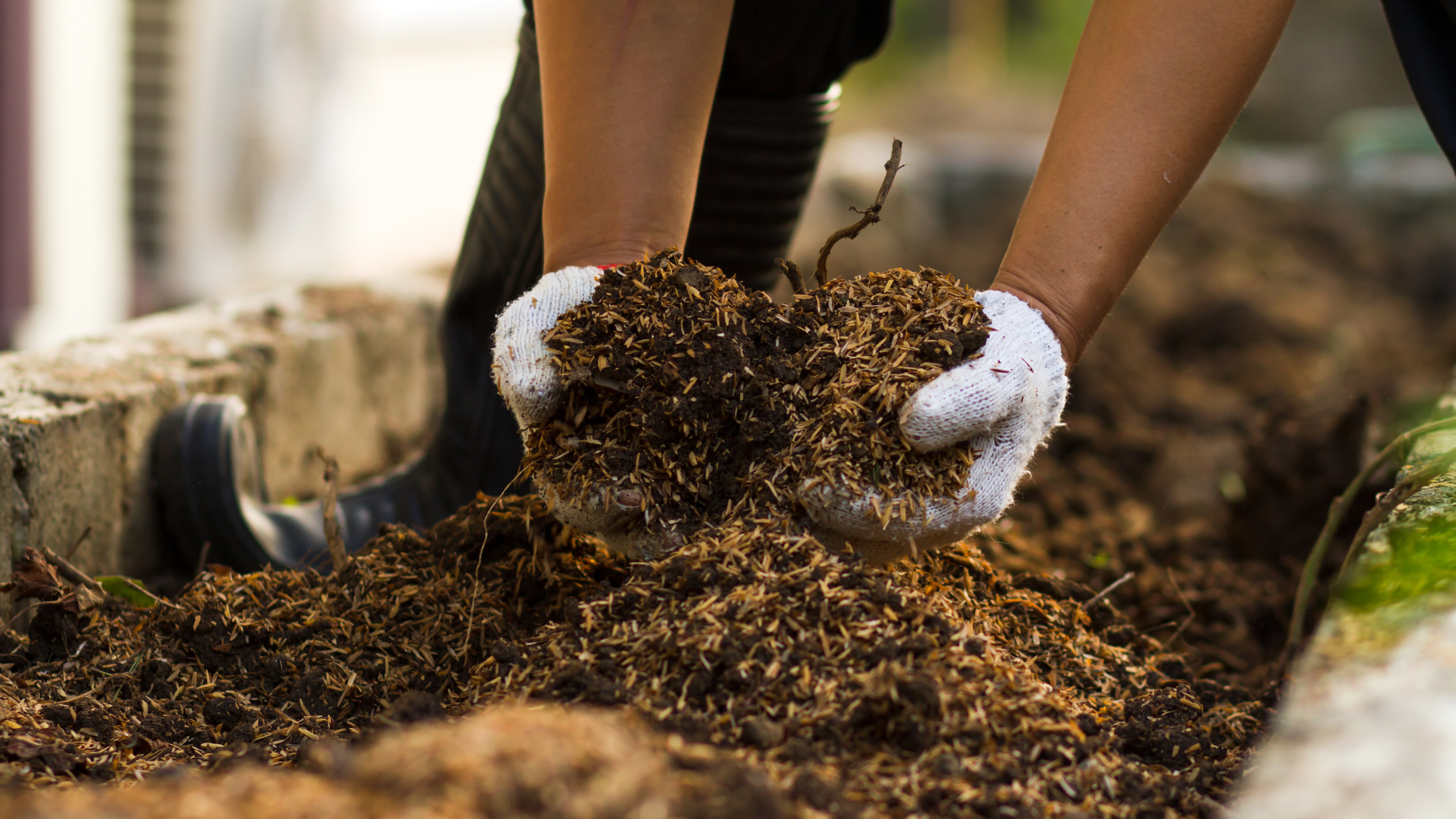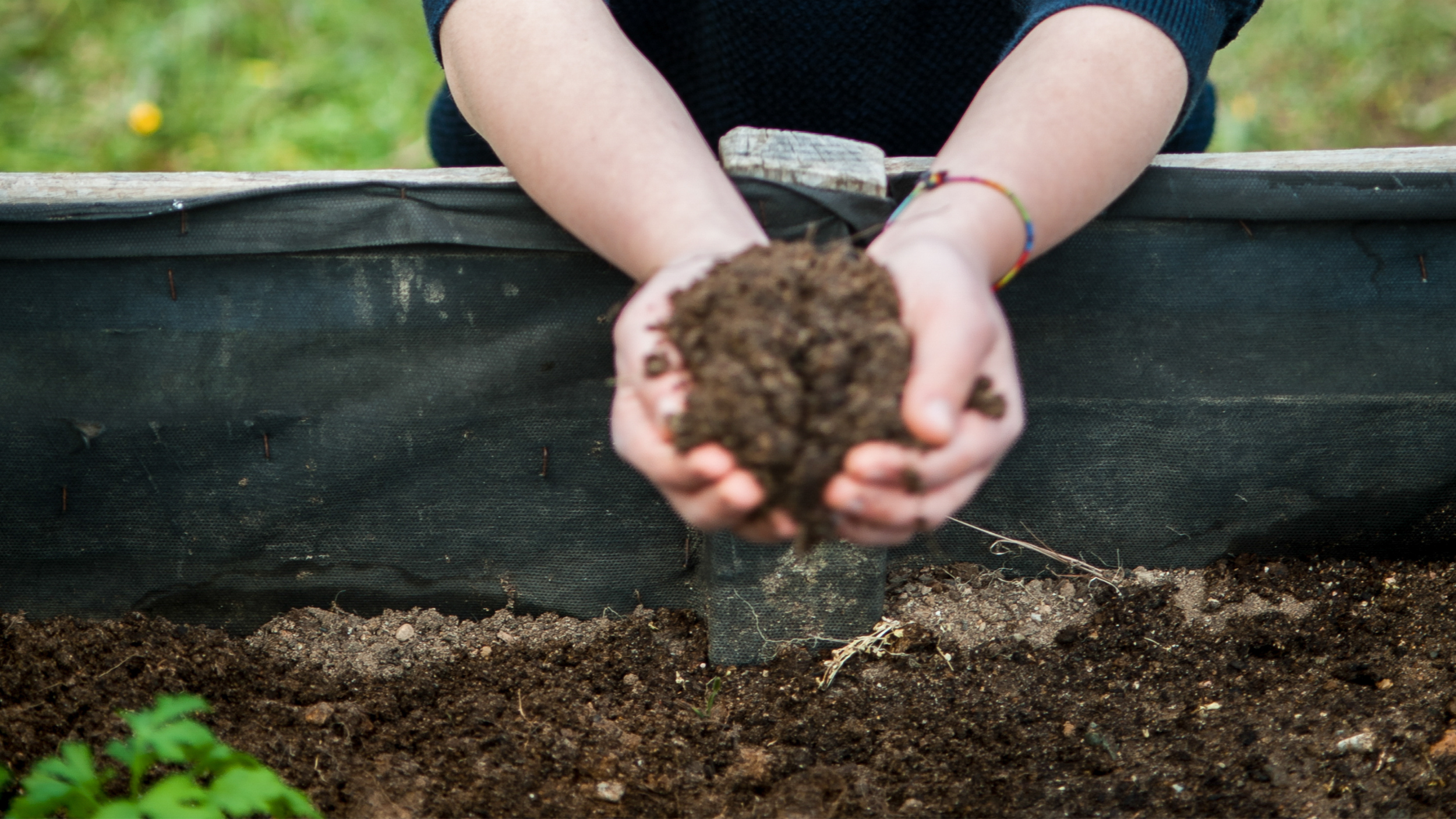
Creating Compost
Many of us fear composting, worrying it will turn into a smelly, vermin-attracting mess. But composting is a natural process in untamed environments, and we can harness it to benefit our gardens.
Composting is a recycling of organic matter into a nutrient rich humus
Compost is very beneficial for our soils, many of which are quite poor. Here in the subtropics where we hardly experience a period of plants shutting down for the winter there is nearly a constant demand for nutrition from the soil so it is even more important that we keep on putting vegetable matter back in. Furthermore, our sometimes very heavy rainfall can cause soil to leach adding to the loss of nutrients. Composting is mimicking a natural process that occurs as organic materials break down into the earth thanks to hard working soil organisms. When we make compost we are harnessing this natural process and speeding it up.

Improving our soils is the best thing we can do for our garden.
Healthy soils encourage healthy plants.
There are different ways to make compost, but the quickest method is hot, or aerobic, composting. This process needs heat, air, and water to create the right environment for breaking down organic matter into nutrient-rich humus.
To do this effectively, you need the right balance of nitrogen-rich (wet) materials and carbon-rich (dry) materials. Because oxygen is essential, compost piles need to be turned regularly to keep air flowing. This can be a big job without machinery, especially since the pile needs to be quite large to generate enough heat. Some homemade solutions can help with aeration, such as placing a poly pipe with holes vertically into the heap to let air in. For home gardeners, compost tumblers or aerobic compost bins make managing this process much easier.
Compost doesn’t need to follow strict rules—after all, it’s a natural process!
If you’re new to composting, a quick internet search will offer plenty of helpful recipes to guide you in mixing the right materials based on what you have available. Adding a handful of lime to your compost is often a good idea to keep the mix “sweet,” meaning it stays balanced and not too acidic.
Some people compost simply by piling garden waste directly on the ground or in trenches, letting nature do its work. This method usually works as long as there’s a good balance between nitrogen and carbon, but the process will take much longer. This is called anaerobic or cold composting because the pile isn’t turned to let air in, so less heat is generated.
Nitrogen-rich materials include things like animal manures, grass clippings, green garden prunings and weeds, vegetable peelings, coffee grounds, tea leaves, comfrey, yarrow, lucerne hay, and blood and bone.
Carbon-rich materials include shredded paper, broken-up cardboard, straw or dry hay, sawdust, twigs and small pieces of wood and bark, eggshells, and dry leaves.
Give it a go—it’s rewarding and great for your garden!
Can’t find what you’re looking for?
In order to bloom, you must grow!
Grow Loyalty Club
Growing points for growing gardens!
Our Grow Loyalty Club is FREE to JOIN and rewards you with points you can redeem on future purchases.



